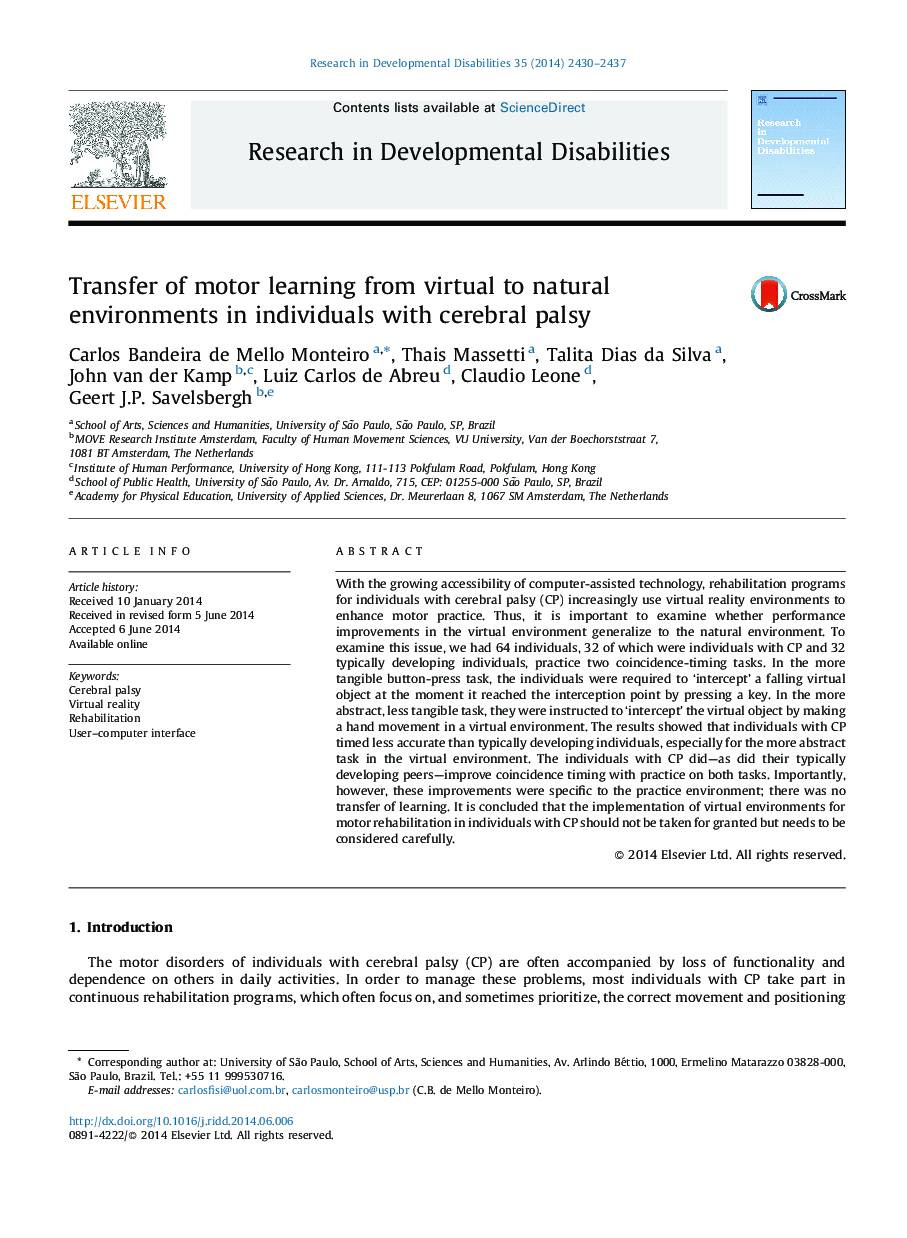| Article ID | Journal | Published Year | Pages | File Type |
|---|---|---|---|---|
| 10317367 | Research in Developmental Disabilities | 2014 | 8 Pages |
Abstract
With the growing accessibility of computer-assisted technology, rehabilitation programs for individuals with cerebral palsy (CP) increasingly use virtual reality environments to enhance motor practice. Thus, it is important to examine whether performance improvements in the virtual environment generalize to the natural environment. To examine this issue, we had 64 individuals, 32 of which were individuals with CP and 32 typically developing individuals, practice two coincidence-timing tasks. In the more tangible button-press task, the individuals were required to 'intercept' a falling virtual object at the moment it reached the interception point by pressing a key. In the more abstract, less tangible task, they were instructed to 'intercept' the virtual object by making a hand movement in a virtual environment. The results showed that individuals with CP timed less accurate than typically developing individuals, especially for the more abstract task in the virtual environment. The individuals with CP did-as did their typically developing peers-improve coincidence timing with practice on both tasks. Importantly, however, these improvements were specific to the practice environment; there was no transfer of learning. It is concluded that the implementation of virtual environments for motor rehabilitation in individuals with CP should not be taken for granted but needs to be considered carefully.
Related Topics
Life Sciences
Neuroscience
Behavioral Neuroscience
Authors
Carlos Bandeira de Mello Monteiro, Thais Massetti, Talita Dias da Silva, John van der Kamp, Luiz Carlos de Abreu, Claudio Leone, Geert J.P. Savelsbergh,
